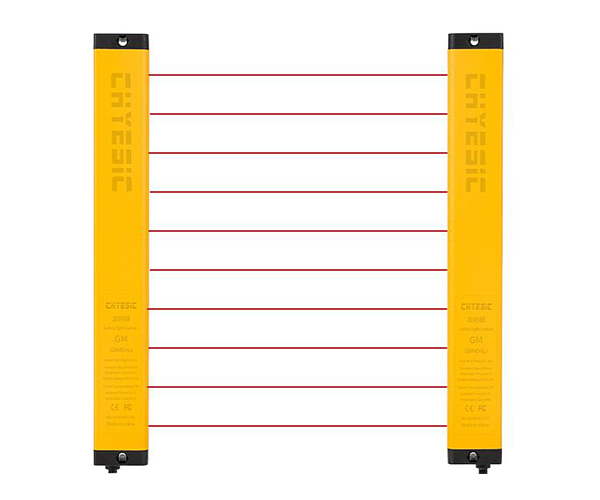The effect of safety light curtain resolution on performance
 22 Feb 2024 click : 290
22 Feb 2024 click : 290The resolution of a safety light curtain is the number of light beams per unit length or the density of light in the grating. The size of the resolution directly affects the sensitivity and detection accuracy of the grating, thus having an important impact on its performance.

The following are some of the effects of resolution on the performance of safety light curtains:
Detection accuracy: Higher resolution provides more detailed detection, allowing the safety grating to more accurately identify the position and boundaries of objects. This is important to ensure the safety of people or equipment, as well as preventing false alarms and false triggers.
Sensitivity: Higher resolution safety light curtains are able to detect smaller objects or obstacles, making them more sensitive. This is particularly important for applications that require a quick shutdown or protective response, such as on high-speed production lines.
Occlusion resistance: High-resolution safety gratings are often more resistant to occlusion, i.e. they are able to detect the boundaries of an occluded object, thus preventing the occluded object from interfering with the normal operation of the grating.
Application Flexibility: Different applications may require different resolutions of safety light barriers. Optical barrier systems with adjustable resolution can be better adapted to different environments and needs, providing greater flexibility.
Environmental adaptability: In some special environments, such as high temperature, low temperature, humidity and other conditions, the choice of resolution may have an impact on the stability and reliability of the encoder. Appropriate resolution enables the encoder to adapt to a variety of environments.
System response time: The choice of resolution may also have a bearing on system response time. Higher resolution may require more computation and processing time, affecting the system response time.
In conclusion
It is important to note that higher resolution is not always better, as too high a resolution may lead to false alarms or increased system complexity. When actually selecting and configuring a security grating, the specific requirements of the application scenario need to be considered comprehensively to ensure that the optimal level of performance and security is achieved.
.jpg)




